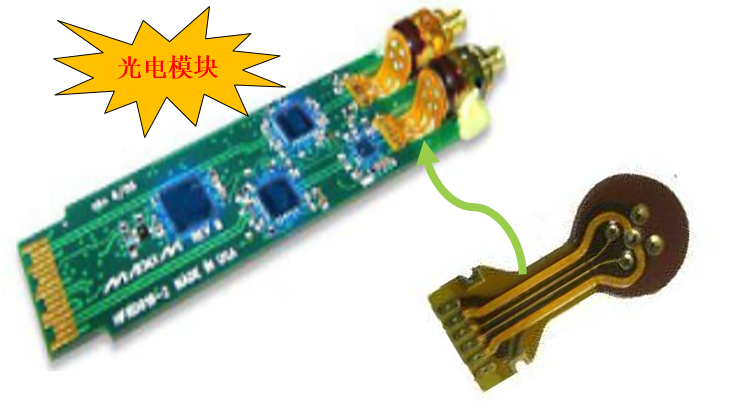

module
Optical modules are an important component of modern communication networks, which achieve the conversion between optical and electrical signals, allowing data to be transmitted through optical fibers at higher speeds and over longer distances.
Overview of optical modules
Optical module, also known as optical transceiver module, is a device that can complete the conversion between optical signals and electrical signals. The optical module generally consists of a transmitter and a receiver. The transmitter can convert electrical signals into optical signals and emit them, while the receiver can receive optical signals and convert them into electrical signals. The main function of optical modules is to achieve photoelectric conversion in optical communication systems.
Classification of optical modules
There are multiple classification methods for optical modules, and the following are several common classification methods:
According to the transmission rate, it can be divided into 155M optical modules, 1.25G optical modules, 10G optical modules, 25G optical modules, 40G optical modules, 100G optical modules, 200G optical modules, 400G optical modules, and 800G optical modules.
According to the packaging form, it can be divided into SFP optical modules, SFP+optical modules, SFF optical modules, QSFP+optical modules, QSFP-DD, OSFP optical modules, etc.
According to the transmission distance, it can be divided into short range optical modules, medium range optical modules, and long range optical modules.
At work, the optical modules are divided into line side optical modules and customer side optical modules. The equipment used to aggregate signals to the backbone fiber optic transmission network link is the line side equipment, and the corresponding optical module is called the line side optical module. On the contrary, if it is an external interface of the transmission network used to connect to the user's device, it belongs to the customer side.
Application scenarios of optical modules
Data center: Data center is one of the important application scenarios for optical modules. With the rapid development of cloud computing and big data technology, the demand for high-speed and efficient optical modules in data centers continues to grow. By adopting high-speed optical modules, data centers can achieve efficient data transmission and backup. At the same time, data centers also require high-density and low-power optical modules to meet their high-density deployment and energy-saving and environmental protection needs.
Communication network: Communication network is one of the main application scenarios of optical modules. From fiber optic access, mobile communication to broadband networks, all require the use of optical modules. In communication networks, optical modules can achieve high-speed and long-distance optical signal transmission and conversion, improving the performance and reliability of communication networks. Meanwhile, with the development of 5G communication technology, the demand for high-speed, miniaturized, and low-power optical modules is also increasing.
Industrial automation: In the field of industrial automation, fast communication and control of sensors and actuators require the use of optical modules. By using optical modules, high-speed and reliable data transmission and signal processing can be achieved, improving the efficiency and accuracy of industrial automation systems. At the same time, the field of industrial automation also requires highly reliable and environmentally resistant optical modules to meet its harsh working environment requirements.
Instrumentation: In scientific fields such as physics, chemistry, and biology, high-speed and accurate measurements and tests are required. By using optical modules, high-speed and reliable data acquisition and transmission can be achieved, widely used in various instruments and testing equipment. At the same time, the field of instrumentation also requires miniaturized and low-power optical modules to meet their portable and long-term working needs.
Security monitoring: In the fields of video surveillance, airport security, and other security monitoring, it is necessary to achieve high-speed and high-definition video transmission and processing. By using optical modules, high-speed and reliable video acquisition and transmission can be achieved, improving the real-time and accuracy of the monitoring system. At the same time, the field of security monitoring also requires light modules with low illumination and wide dynamic range to meet its monitoring needs under night or low illumination conditions.